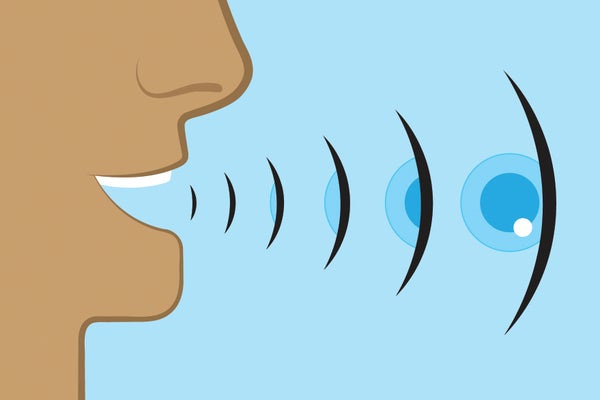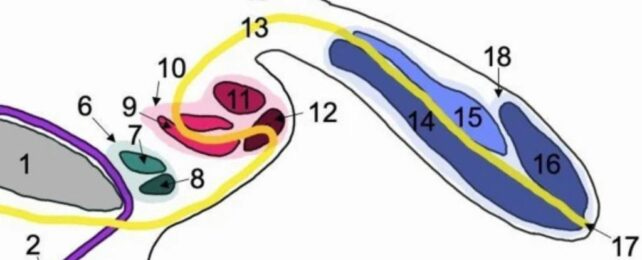Sci-Ed Update 331
Patient wakes up as organs are to be harvested, baby microbiome cocktail, free histo coloring book, person with 3 penises, human echolocation is "visual," hopping genes control development...
‘Poo milkshake’ boosts the microbiome of c-section babies
Feeding a baby born by caesarean section milk containing a tiny bit of their mother’s poo introduces beneficial microbes to their gut, according to a clinical trial. The approach might one day help to prevent diseases during childhood and later in life.
The study — which reported early results last week during IDWeek, a meeting of infectious-disease specialists and epidemiologists in Los Angeles, California — is the first randomized controlled trial to test the ‘poo milkshake’ concept.
The preliminary findings confirm researchers’ hypothesis that a small faecal-matter transplant is enough to have a positive effect on the infant’s microbiome, says Otto Helve, director of the public-health department at the Finnish Institute for Health and Welfare in Helsinki, Finland, and the study’s primary investigator.
Read more→ AandP.info/q7s
Histology Coloring Book
Histology is a foundational and critical component of all medical, dental and veterinary programs as well as many general undergraduate BSc programs. Many students find histology challenging and, while coloring books exist for many other disciplines such as gross anatomy and physiology, there is a current gap in the resources available to those learning and teaching histology. Our histology coloring book will address this with a hands-on, interactive resource that will enable students to utilize active learning skills as they complete coloring correlates to the micro-anatomical structures (cells, tissues and organs) of the human body. This project has been awarded funding through a 2021 Innovations Grant by the American Association of Anatomy.
Kevin Patton comment→ This free-to-use online histology coloring book could be just the thing your students need to unblock obstacles to learning human histology for the first time.
Read more→ AandP.info/ho4
Anyone Can Learn Echolocation in Just 10 Weeks—And It Remodels Your Brain
Human echolocation has at times allowed people to ride bikes or play basketball despite being completely blind from a very young age. These echolocators typically perceive their environment by clicking sharply with their tongues and listening to differences in the sounds reflected off objects.
Thaler co-led a 2021 study showing that both blind and sighted people could learn echolocation with just 10 weeks of training. For more recent work in the journal Cerebral Cortex, she and her colleagues examined the brain changes underlying these abilities. After training, both blind and sighted people displayed responses to echoes in their visual cortex, a finding that challenges the belief that primary sensory regions are wholly sense-specific.
Kevin Patton comment→ Having AMD, I thought I’d prepare for possible vision loss later in life, but nobody around here offers 10-week echolocation classes. That’s probably just as well, considering that I also having a hearing impairment.
Read more→ AandP.info/bln
Ultra-Rare Case of Man With Three Penises Unlike Anything on Record
An extraordinary case of a man with three penises was just described in the scientific literature. It's only the second time, and the particulars of this example are one of a kind.
The unique anatomical quirk was found by accident in a White male, who died at the age of 78 and who may not have known about his congenital anomaly in life.
The man donated his body to science, and only upon post-mortem examination by researchers from the University of Birmingham in the UK were two extra penile shafts discovered hiding underneath the man's skin, near his main external sex organ.
Of all the reports of multiple penises published in scientific literature between 1606 and 2023, researchers could find just 112 case studies that describe complete 'diphallia' or a double penis. Only one other report describes a triple penis or 'triphallia', and this previous case was obvious from the outset.
Kevin Patton comment→ I think that even many anatomists don’t appreciate how much variation there is among human bodies. Often, it goes undiscovered because much of it is not externally apparent.
Read more→ AandP.info/jwx
Anatomic Variations in Humans
Perhaps variation is normal. And maybe “normal” is a mythical, but useful, construct we use in understanding human anatomy.
To listen to this episode, click on the play button above ⏵ (if present) or this link→ theAPprofessor.org/podcast-episode-43.html
‘Horrifying’ mistake to take organs from a living person was averted, witnesses say
Natasha Miller says she was getting ready to do her job preserving donated organs for transplantation when the nurses wheeled the donor into the operating room.
She quickly realized something wasn’t right. Though the donor had been declared dead, he seemed to her very much alive.
“He was moving around — kind of thrashing. Like, moving, thrashing around on the bed,” Miller told NPR in an interview. “And then when we went over there, you could see he had tears coming down. He was crying visibly.”
The donor’s condition alarmed everyone in the operating room at Baptist Health hospital in Richmond, Ky., including the two doctors, who refused to participate in the organ retrieval, she says.
“The procuring surgeon, he was like, ‘I’m out of it. I don’t want to have anything to do with it,’ ” Miller says. “It was very chaotic. Everyone was just very upset.”
Kevin Patton comment→ There’s more to the story—and it’s even more shocking than this!
Read more→ AandP.info/3gd
AI Detectors Falsely Accuse Students of Cheating—With Big Consequences
Since OpenAI’s ChatGPT brought generative AI to the mainstream almost two years ago, schools have raced to adapt to a changed landscape. Educators now rely on a growing crop of detection tools to help spot sentences, paragraphs or entire assignments generated by artificial intelligence. About two-thirds of teachers report using an AI checker regularly, according to a survey of more than 450 instructors published in March by the Center for Democracy & Technology.
The best AI writing detectors are highly accurate, but they’re not foolproof. Businessweek tested two of the leading services—GPTZero and Copyleaks—on a random sample of 500 college application essays submitted to Texas A&M University in the summer of 2022, shortly before the release of ChatGPT, effectively guaranteeing they weren’t AI-generated. The essays were obtained through a public records request, meaning they weren’t part of the datasets on which AI tools are trained. Businessweek found the services falsely flagged 1% to 2% of the essays as likely written by AI, in some cases claiming to have near 100% certainty.
Even such a small error rate can quickly add up, given the vast number of student assignments each year, with potentially devastating consequences for students who are falsely flagged. As with more traditional cheating and plagiarism accusations, students using AI to do their homework are having to redo assignments and facing failing grades and probation.
Read more→ AandP.info/bmj
Pregnancy can change your feet forever. Here’s the science behind 'mom feet.'
In 2022, American track and field legend Allyson Felix announced that her running shoe brand Saysh would institute an unusual return policy. It stated that if you had purchased a pair of sneakers and your feet changed size due to pregnancy, you could get a new pair.
The policy was a remarkable public acknowledgement of an issue rarely discussed outside the mom group text: pregnancy can permanently alter the size of your feet—making them up to one or two sizes bigger, a phenomenon known as “mom feet.”
And that’s not the only way pregnancy can change your feet. Many women also experience extreme swelling, gait changes, fallen arches, and more. Although these conditions have often been dismissed in the past, some scientists say they should be taken more seriously.
(Scientists are finally studying women’s bodies. This is what we’re learning.)
“Pregnancy is also treated as a temporary condition, so some doctors just kick the can down the road and say once you deliver, things will go back to normal,” says Neil Segal, an associate professor of orthopedics and rehabilitation at the University of Iowa. But as research like his has shown, that just isn’t the case for many women.
Here’s what scientists are learning about how pregnancy changes your feet—and how to deal with it.
Read more→ AandP.info/ybf
'Selfish DNA' controls early human development, not our genes
When we think about the developmental stages of human life, we often picture our genes, or genetics, calling the shots. Now we’ve learned that’s simply not true. Something called “selfish dna,” or transposons, are in control of early human development.
These tiny DNA elements, known for their ability to hop around the genome, have recently been revealed as key regulators in early human development.
Transposons have historically been thought of as DNA interlopers — virus-like entities that hijack our cells to reproduce themselves.
Yet, recent research flips this understanding on its head. What if these supposed intruders are not only harmless but indispensable for our early development?
Dr. Miguel Ramalho-Santos, Senior Investigator at the Lunenfeld-Tanenbaum Research Institute (LTRI), part of Sinai Health, and Professor at the Department of Molecular Genetics at the University of Toronto, and the study’s senior co-author, makes a fascinating revelation.
“But here we have discovered that these elements are not mere genomic parasites but are essential for early development,” he informs us.
The research team focused their investigation on a particular type of transposon called LINE-1. While our genes make up less than 2% of our genome, LINE-1 elements account for an astounding 20%.
They found that these LINE-1 elements are critical to ensuring human embryonic cells proceed normally through early development. If inhibited, it would transport cells back to a more primitive stage.
Read more→ AandP.info/dp3











